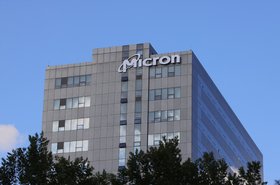Belgian AI computing startup EDGX has closed a €2.3 million ($2.6m) seed round for its Sterna Edge AI computer for satellites, just as it signed a multi-unit deal with an unnamed operator for €1.1 million ($1.2m).
The EDGX Sterna is a data processing unit equipped with Nvidia components supported by its proprietary SpaceFeather software stack. Its space-hardened construction features supervisory systems for health monitoring, radiation fault detection and recovery, and software-defined programming capable of remote re-application of functionality, using a Linux OS with full traceability.
“Customers aren’t waiting for flight validation, they’re signing now,” Nick Destrycker, founder and CEO, said in a statement. “With a full launch manifest, secured commercial contracts, and our first mission set for Falcon 9 [in February 2026], this funding enables us to scale to meet demand for real-time intelligence from space.”
In addition to its 2026 in-orbit demonstration mission, the company also announced two further flights already scheduled in 2026.
The round was co-led by an existing investor, European university accelerator imec.istart fund, and the Flanders Future Tech fund, managed by Flemish investment firm PMV.
“EDGX represents exactly the kind of transformative infrastructure play we look for,” said Kris Vandenberk, managing partner at imec.istart Future Fund in the same statement.
“The space industry is hitting a fundamental bottleneck; we’re generating massive amounts of data in orbit, but still using outdated ‘store and forward’ architectures. EDGX is solving this by bringing AI-powered Edge computing directly into space, enabling satellites to analyse and act on data in real-time rather than waiting for ground processing.”
Data-heavy applications in-orbit include cybersecurity and potential Lunar applications, but mainly imaging and remote sensing of Earth and the orbital plane, and the subsequent analysis, including military intelligence, surveillance, and reconnaissance (ISR), which Sterna is designed to support at 5G and 6G standards.
In spectrum monitoring, Sterna is able to process, locate, and classify diverse radio signals and generate dynamic spectrum maps to assist operators’ understanding of frequencies, avoid interference, and allocate bandwidth more efficiently.
More in IT Hardware & Semiconductors
Read the orginal article: https://www.datacenterdynamics.com/en/news/edgx-sees-23m-seed-round-for-satellite-edge-ai-compute-technology/









